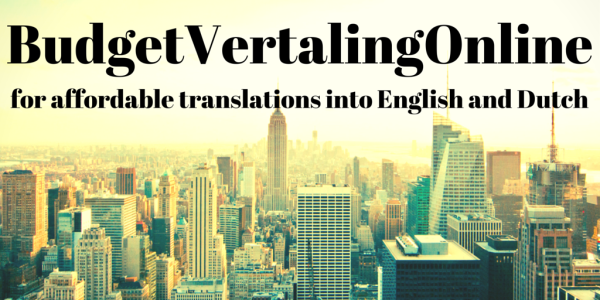If you are an entrepreneur, you might be thinking about going abroad with your company. Expanding your company abroad offers many business opportunities. In order to speak to the new target audience correctly, translations are required.
Translation is a difficult process, which is why it is advisable to work with professional translators only. This assures you of industry expertise, accuracy consistency, high quality as well as efficient turnaround time. In this blog, you find 11 quick translation tips that will prepare you for the purchase process of translation services.

1. Write your text with your specific target audience in mind
Creating copy for international clients means special care must be taken with every word. When translating, it is important to maintain the same style and level of writing as in the source language.
Acronyms, plays-on-words, colloquial expressions, and national contexts sound stellar in a brochure of your own language but lose all impact when translated.
LanguageAlliance.com gives the example of sport puns: they work great in the U.S., but not in other countries.
2. Plan in advance
Find a translator as early as possible. It you need the translation to be printed and you have a deadline, remember that translation work takes as long as the time consumed to write the original.
CulturesConnection.com even claims that it takes longer: “Some people think that the translation of a text takes pretty much the same time it took to write it in the first place. Wrong: on average, a professional translator can translate between 250 and 350 words per hour.”
Sarah Dillon mentions a common misconception: “That marketing copy that took a team of 20 people two months to put together can be translated overnight by one person and still retain the same impact as the original.”
Please note that translations take time. SwedishTranslationServices.com warns you not to believe “a translation provider that claims it can translate 10,000 words per day. The maximum that a top professional translation company can accurately translate is 2,000-3,000 words each day. Never sacrifice quality with quantity.”
If you expect to have a rush translation job, please advise the translator in advance and anticipate higher surcharge rates.
3. Do not use machine translations
A machine cannot replace the skills of a professional translator as proper language that people will truly understand can only be done by human translators. After all, automatic machine translations do not understand the nuances of language.
Machine-generated translations can only provide a rough draft of something. It is not a publication-ready text and it can only be used for user generated content, as I explain in my blog Machine translations for your website: not always the answer! Automatic machine translations will invariably offer a translation full of errors that could potentially do more harm than good.
As Smarta says, “by offering a less than perfect translation to your customers, you are in effect saying that they are not very important to you and that their need to understand your text is insignificant. This could mean a big knock to your brand’s reputation.”
4. Per-word rates may not reflect total costs
Usually, translators ask for a rate per word, but it may also occur that they ask for hourly rates. Make sure to check whether these are the only rates they charge.
For instance, ask the translator or translation agency of your choice whether he or she charges for technology, project management, setup, urgency or working on the weekends.
Doing this in advance helps you avoid unexpected drains on your translation budget.
5. Consider that you get what you pay for
Be wary of providers with extremely low rates, such as 0.5, 1, or 2 cents per word. They may skip essential steps in the translation process.
Low-quality translations can cost you a great deal of time and money if you have to fix mistakes. These are expenses unlikely factored into your budget.
Even worse, errors that are not caught can result in product recalls or end up harming your customers. Think of the damage to your brand’s reputation!
Check the translation process beforehand. Do not hesitate to ask questions about the translator’s services, the inclusions in that service and if he or she provides a guarantee for the translation work.
6. Look for expertise and experience
Forget about the rates for a second and consider quality. How can you check the translator’s quality? The translator’s current clients can probably tell you best. A translator should be able to give you examples and references to help you make a sound decision.
In addition, the translator could have a feedback page on his or her website or recommendations on his or her LinkedIn profile. These comments can tell a lot about the qualities of the translator. See for what the translator is praised the most and ask yourself whether that is the quality you are looking for.
Finally, make sure the translator or translation agency has expertise in your industry, subject matter knowledge and experience.
This can bring to light any red flags or remove any uncertainties before ordering a translation.
7. Samples do not necessarily reflect quality
You might want to check the quality of a translator by asking for a sample translation. However, if you do this, do not focus on it too heavily.
While a sample can give you a good indication of the translator’s skills, they rarely show the translator’s full capabilities. Quality is a process, not a one-time event, as Sajan says.
Sajan explains that samples are usually created without company glossaries, styles guides and other resources, which help translators understand your translation preferences around messaging, brand identity and more.
When samples are returned, evaluate them with this in mind so you can compare translator quality.
8. A detailed brief is important
As translator needs to know what you expect from the translation and whom it addresses. Please outline the target audiences, distribution outlets and constraints in terms of layout or space. Make sure the translator understands the demographics of your target audience.
9. Designate a contact person
In case of questions and clarifications, a translator needs to be able to speak to someone ASAP.
Make sure someone is available who can answer questions. That contact person should be available by phone and respond to emails quickly.
If the translator cannot reach you or the designated contact person, the translation process is hindered. This could lead to less quality, as the translator can only guess the answers.
10. Make room for expansion
Translations typically require more words than the original document to communicate the exact same detail. This concept, called the “expansion factor,” means that your original 250-word brochure may be 400 words after it has been translated.
Smarta claims that “when translating from English to Russian, the word count increase is roughly 30%. Conversely, many Asian languages use scripts that require less space than English.”
11. Examine legal, religious and cultural differences
It is important to take note of legal, cultural or religious differences when translating into another language, so that you do not accidentally produce illegal or offensive texts.
For example, Chinese Advertising Law prohibits any advertising from using the words ‘the highest level’ or ‘the best.’

